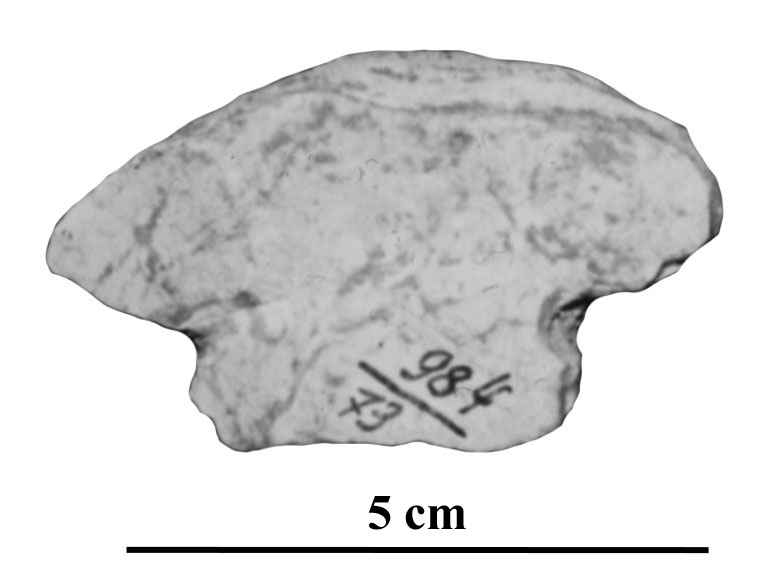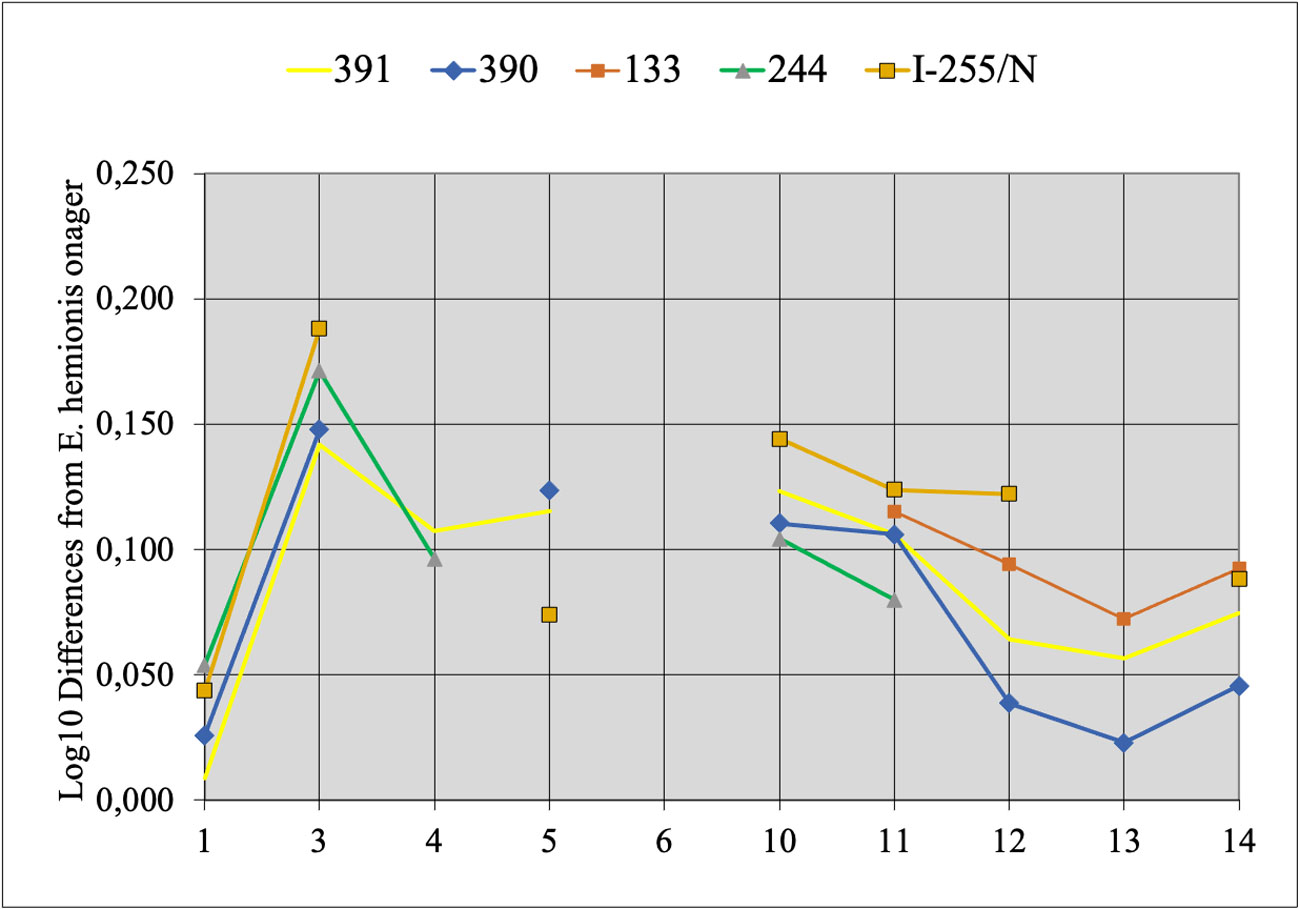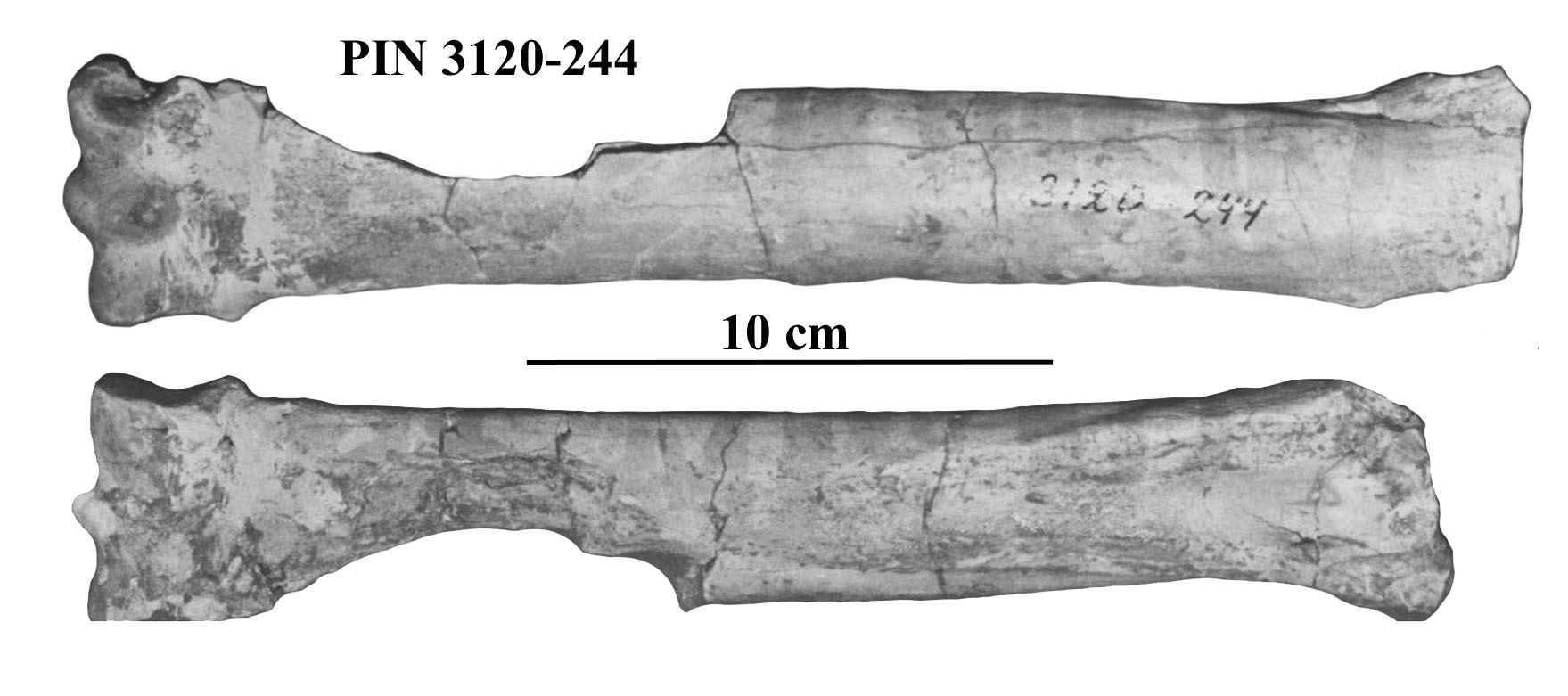Kuruksai, Metapodials
METACARPALS (Table 4)
There are three different morphologies.
– Most specimens have wide and rather shallow distal ends (Fig. 12). Some of them can be seen on Figure 13. A distal fragment of MC from Montopoli is the closest I could find.
– Two specimens have deep proximal ends (Fig. 14).
– According to Sharapov’s data, the distal keel is very developed in the slender 1-13/N (Fig. 15) and in the much smaller I-213/N and I-214/N (Fig. 16). MC as slender as I-13/N may be found in Allohippus sp. from Loc B (China) and from Liventsovka (Russia).
METATARSALS (Table 5)
– Most MT are robust, wide at their proximal and distal ends, and with very shallow distal depths (Fg. 17). Marked with asterix are the specimens photograped on Figures 18, 19, and 20.
– Five are smaller and slenderer but with similar shallow distal ends (Fig. 21). The photo of PIN 3120-244 is in Figure 22.
– Six are very small, slender, and with deep extremties (Fig. 23). The photographs of PIN 3120-329 and the MT without number are in Figures 24 and 25.
Véra Eisenmann
Articles by this author
- Eisenmann V, Howe J., Pichardo M. Old World hemiones ans New World slender species (Mammalia, Equidae)species
- Predictive use of modern reference osteological colections for disentangling the shape of Eurasiatic equid cheek teeth and metapodials in archaeological material
- The equids from Liventsovka and other localities of the Khaprovskii Faunal Complex, Russia: A revision
- The Late Middle Pleistocene Oumm Qatafa mammalian fauna of Oumm Qatafa, Judean Desert
- Additional Information
- [...]
![]() en
en
![]() Equidae monodactyles
Equidae monodactyles
![]() Equidés monodactyles fossiles (Equus, Allohippus, (…)
Equidés monodactyles fossiles (Equus, Allohippus, (…)
![]() Kuruksai
?
Kuruksai
?
Site powered by SPIP 4.3.3 + AHUNTSIC
Réalisé par agence web Epistrophe |













